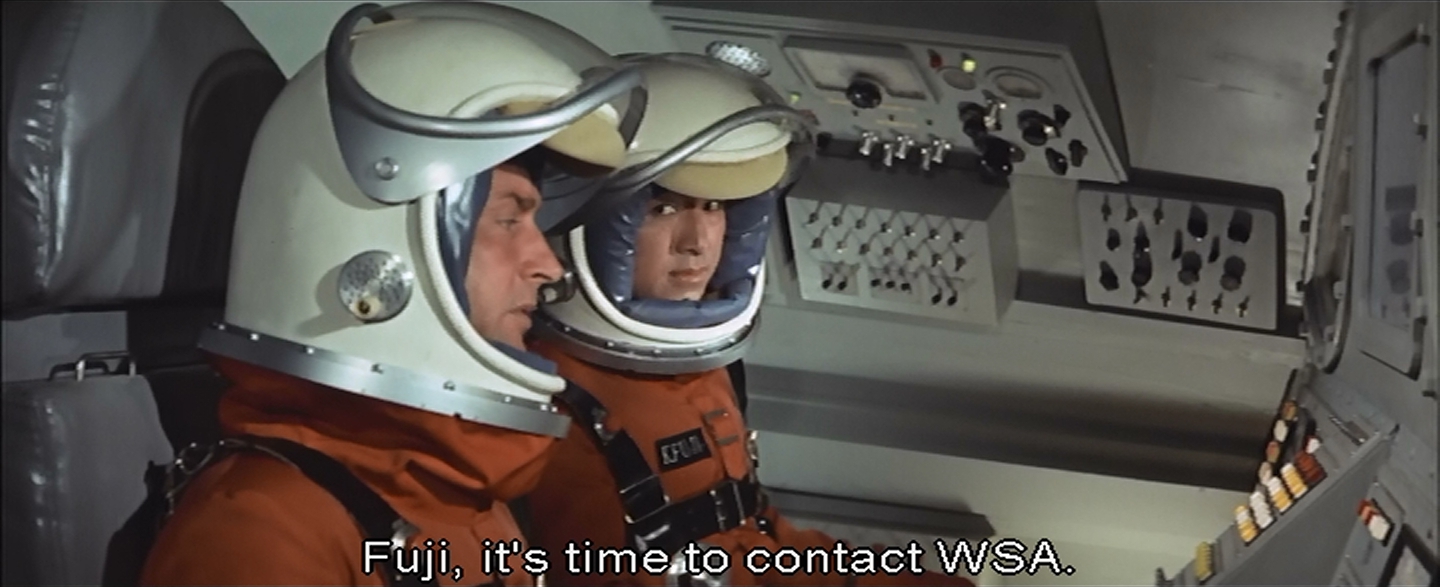
Of course, where there are aliens, there will be an invasion. Planet X, where the Xilians are from, seems to be a moon of Jupiter, although the dialog paints it as its own planet. Whatever. Although Planet X is on the dark side of Jupiter, where the astronauts cannot get in radio contact with Earth, the scientists discuss Planet X being a source of strange radio waves. But I'll stop nitpicking.
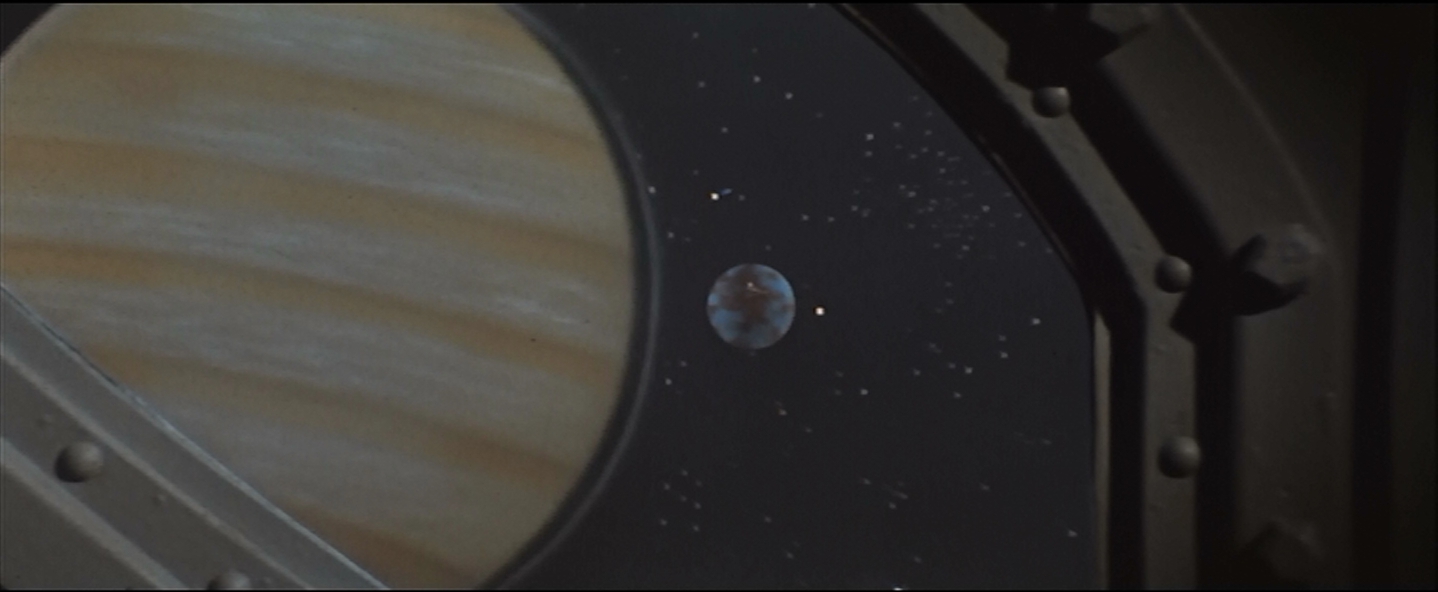
Xilians are prototypical Toho extraterrestrial invaders. Where American alien invaders will smash famous monuments with their superior weapon technology, Toho aliens will start with a freindly entreaty, and then proceed to demonstrate their superior weapons technology. The American miniseries V is a rare exception to this trend. The Xilians do provide us with a particularly impressive dick move. On the tape that is supposed to contain the cure for cancer, the Commandant of the Xilians reveals his plans to destroy Earth and starts giving orders. For someone in such tight pants, the Commandant clearly has a serious pair.
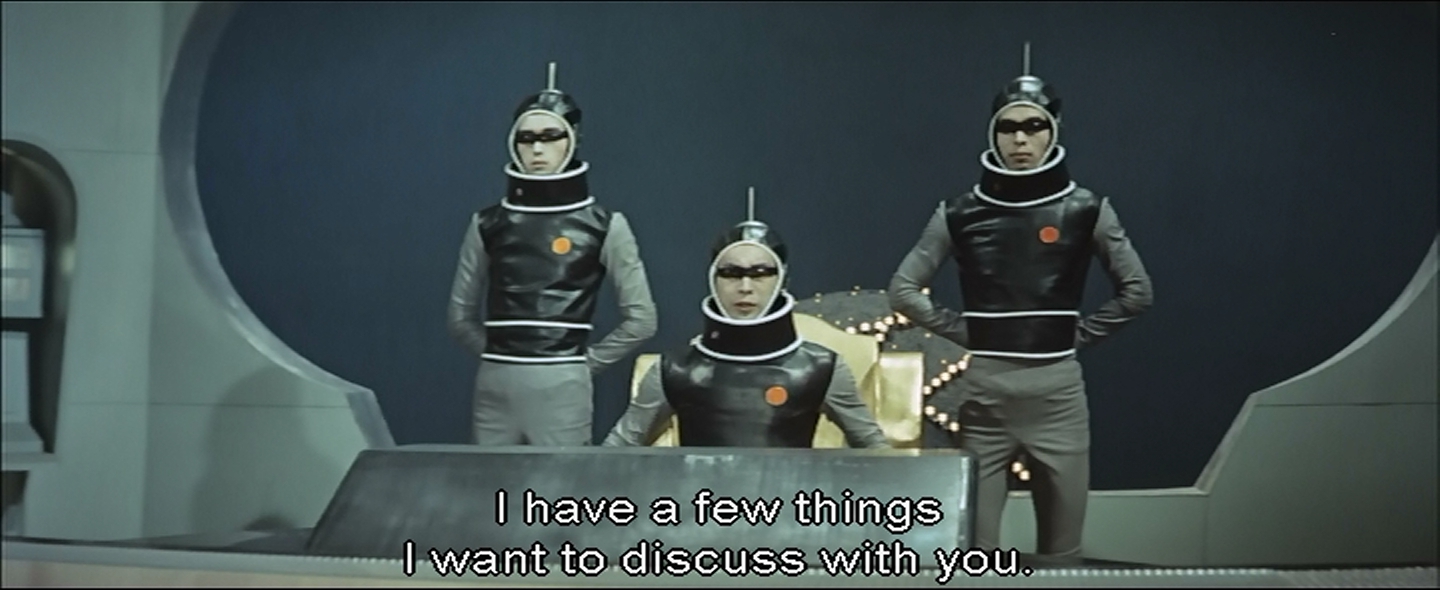
Fortunately, the Xilasns havge a weakness, a particular sound, annoying to humans, fatal to Xilians and their equipment. With it, the Japanese manage to fend off the invasion. It should be noted that this was co-produced by Henry Saperstein, who also suggested edits to the script. Thus the film is more American, right down to the triumph of the military. While Godzilla and Rodan defeat Ghidorah (Kalat claims Mothra was cut for budgetary reasons), the Japanese military are the ones to take down the Xilian UFOs and base. The military is not useless, as it has been in previous Godzilla films, partially because of the introduction of a truck-based energy canon which interfered with the Xilians Godzilla control signal. This design is a precursor to the maser which we will see in many subsequent Godzilla films.
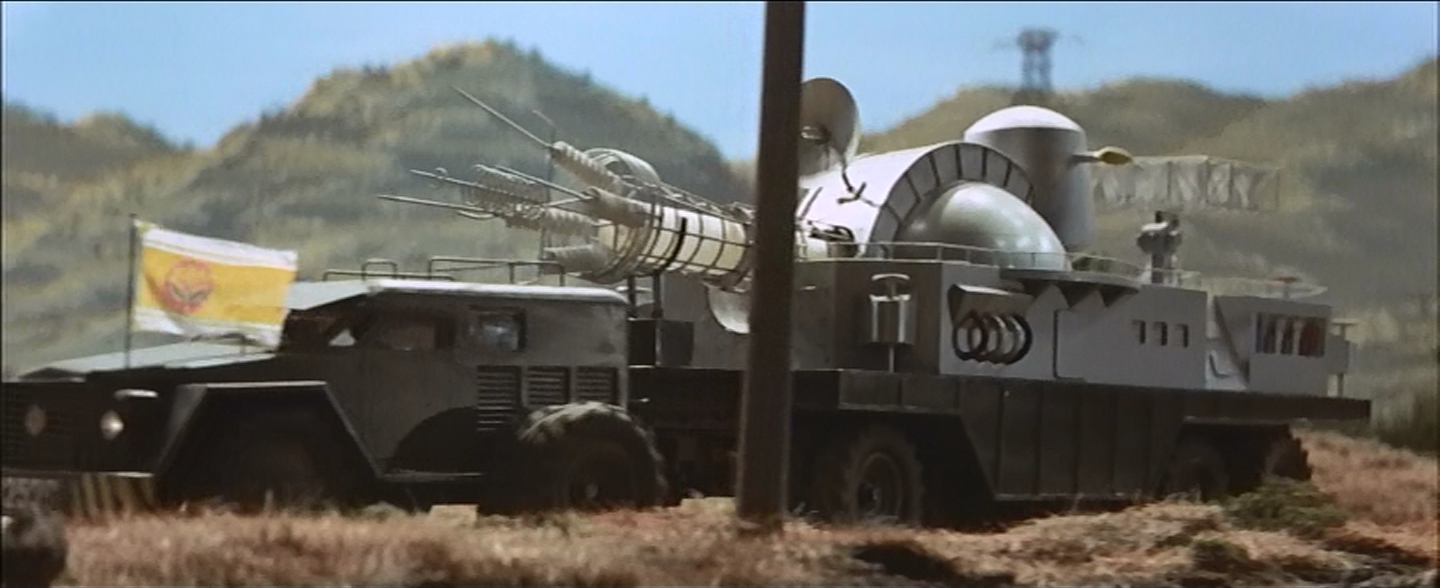
With the close links between this film and the last, I wonder if the Xilians directed Ghidorah to destroy the civilization on Venus five thousand years ago, forcing the Venusian migration to Earth. The timeline seems a bit long, since I figure that the Xilians could have figured out that comets are water in that time. But perhaps it has taken the technologically-staid aliens this long to run through all the water they got from Venus. This tenuous thread is never followed up on.
The film was made in 1965, so there's a possibility that Gene Roddenbury's Star Trek was an influence, but this was the first time we see a protagonist corrupt an alien with love. American actor Nick Adams was apparently having an affair with his co-star Kumi Mizuno, who played alien spy Miss Namikawa. This may or may not have added any authenticity to their on-screen romance. They play opposite each other in Toho's Frankenstein Conquers the World (next up). But here, "Miss Namikawa" is a Xilian spy, who are supposed to be emotionless. But Astronaut Glenn provokes an emotional attachment, and she betrays the Xilians. Love conquers all, apparently.
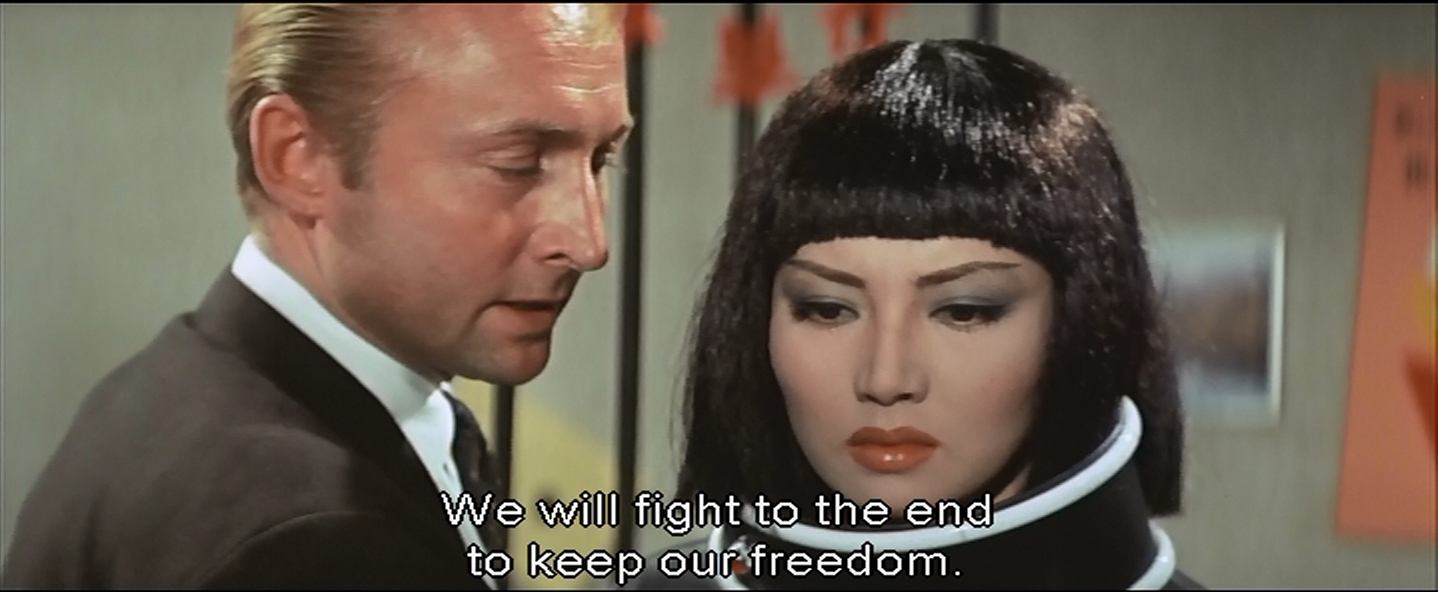
The suit work is pretty standard, but the Planet X set deserves extra praise. The rocky, barren surface of Planet X is alien without being too fantastic. The beautiful matte painting features a gigantic Jupiter in the background, so the initial fight has an absolutely gorgeous backdrop.
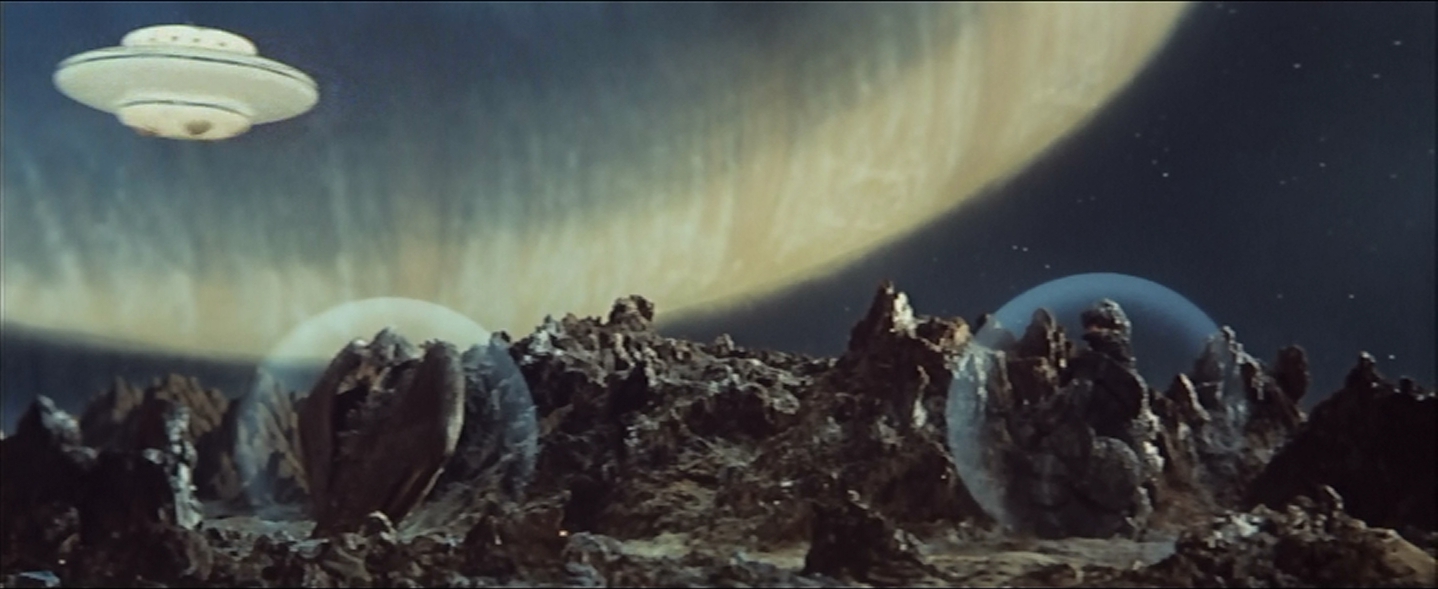
Ghidorah looks even better than he did in the last film. I suspect it might be the same suit, but they seem to have worked the kinks out of working with it. There's a bit of weirdness where he knocks out the water plant on Planet X. But the Xilians can control monsters, so why the damage? I have two ideas, neither of which is supported by the film. One that it's entirely theater, which would be a pity, because it gavet eh first inkling to the astronauts that the Xilians were looking for something on Earth. Alternately, the Xilians let Ghodorah loose, and the damage is more than they initially thought it would be. Either way, Ghidorah is as nasty as he was in Ghidorah, the Three-Headed Monster.
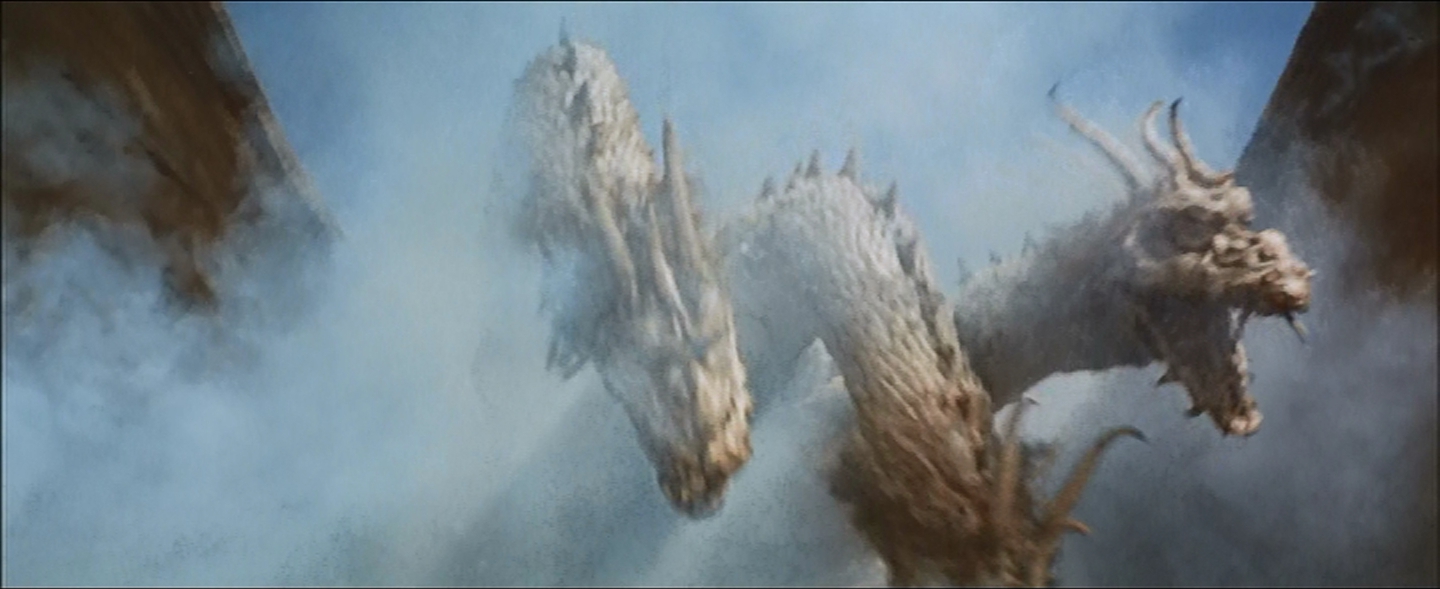
Godzilla continues to evolve into a benevolent monster, a journey he started in Ghidorah, the Three-Headed Monster. He would become more and more human-friendly until the franchise reboot of 1985. The ultimate villains here are the Xilians, their Commandant is more the hands-off evil schemer as opposed to the direct threat that was Malness in Ghidorah.
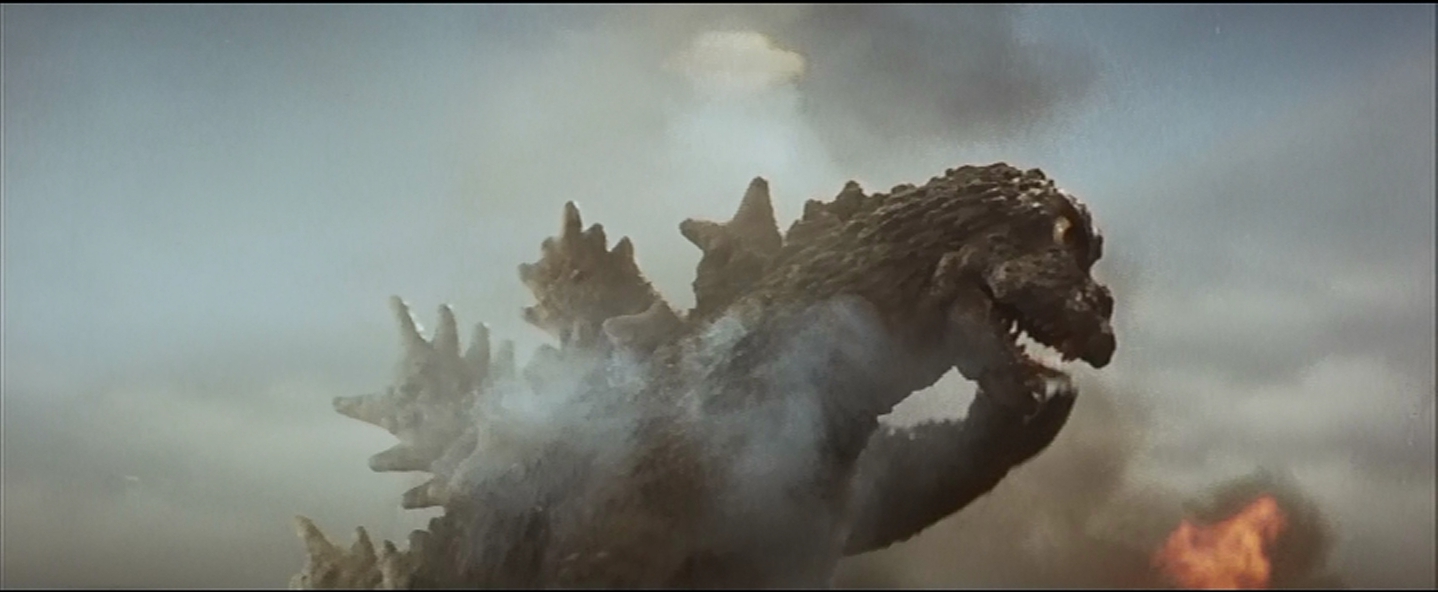
Unfortunately, Invasion of Astro-Monster also begins the discouraging trend of recycling footage, both from itself, as well as Rodan. The special-effects spectacles were running low on money, and reached a dissappointing nadir with Godzilla vs Megalon. The use of previous footage is fairly subtle here, consisting mainly of repeated shots of tanks firing and Godzilla's gigantic foot crushing a town. Scenes from Rodan are spotted by the alert viewer because of the change in Rodan's suit color. The size of the city Godzilla crushes is much smaller than with previous, better-funded films. After this, and until Godzilla vs Mechagodzilla, monster fights will happen in forested areas rather than Tokyo or Yokohama. But we have a reduced-size refinery here, and some excellent footage of Godzilla stomping buildings.
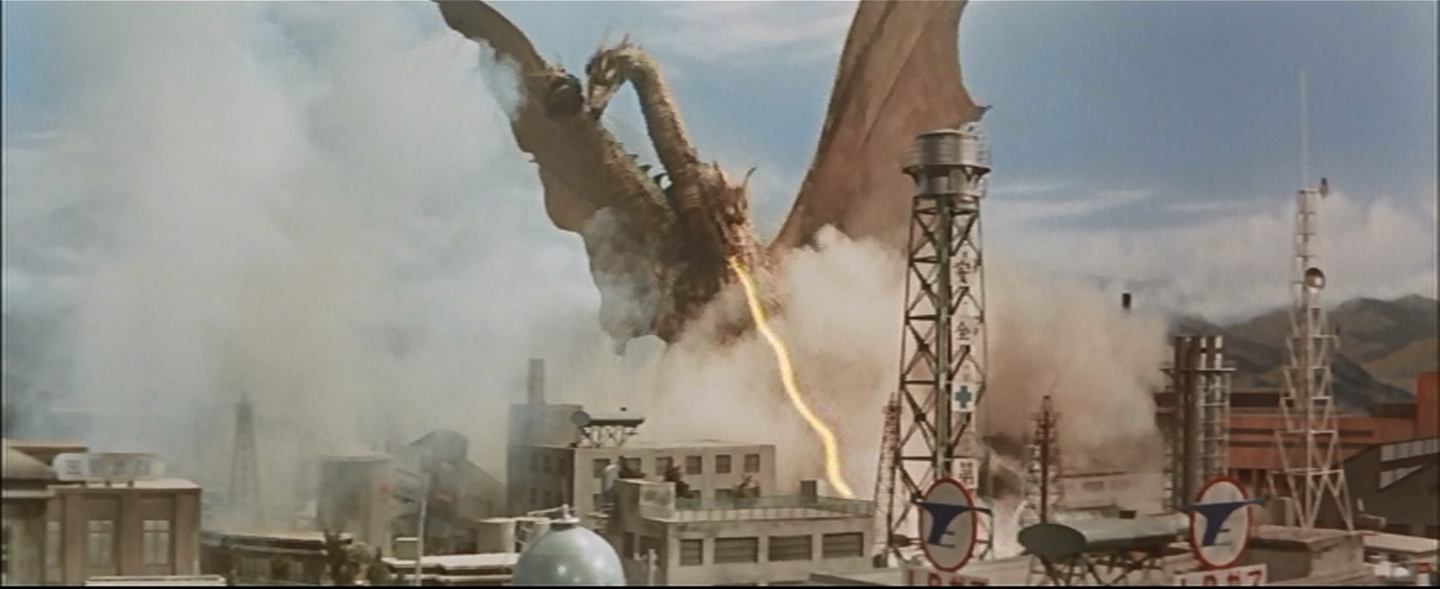
We are also treated to a few shots, real shots, rather than models, of cities. These are an unintentional time capsule of the day, and the smog is immediately apparent. And frightening.
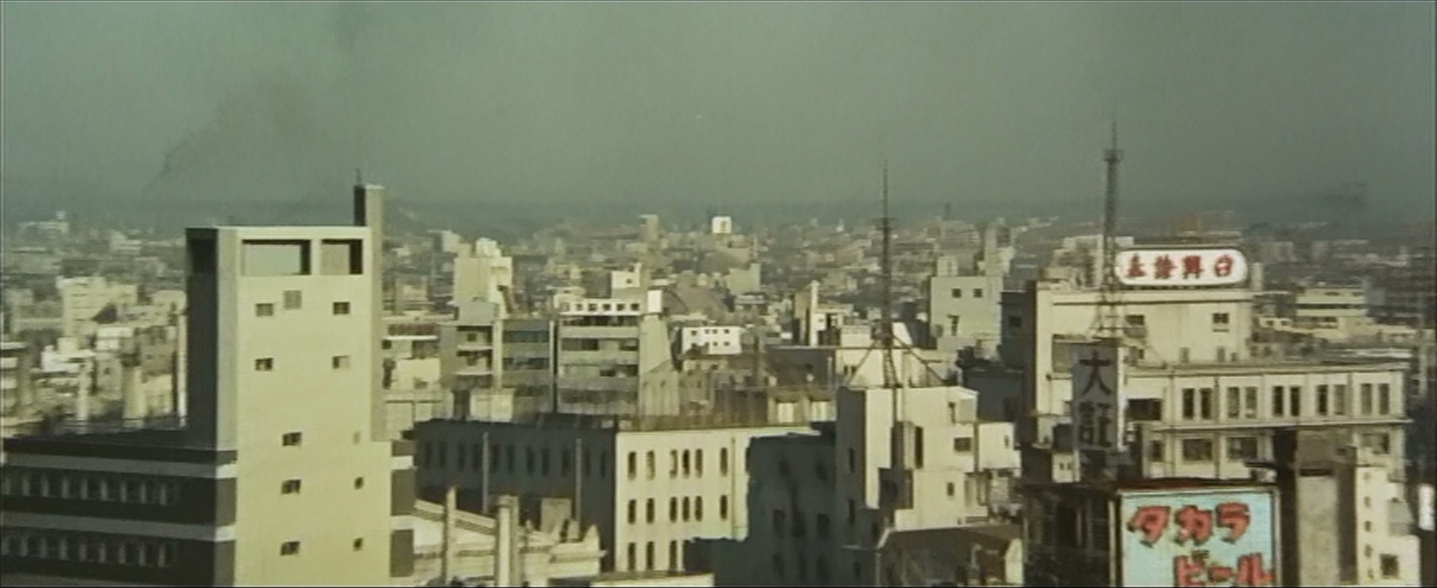
The military attacks the Xilians with their sound assault, and Xilians immediately expereince technical difficulties, since the annoying noise incapacitates them and blows up their equipment. The Commandant's last line is an interesting one, with the potential to bring the Xilians back at some time, a possibility which took some forty years to come to fruition in Godzilla, Final Wars. No doubt due to the limited supply of tight silver jumpsuits and punk glasses.
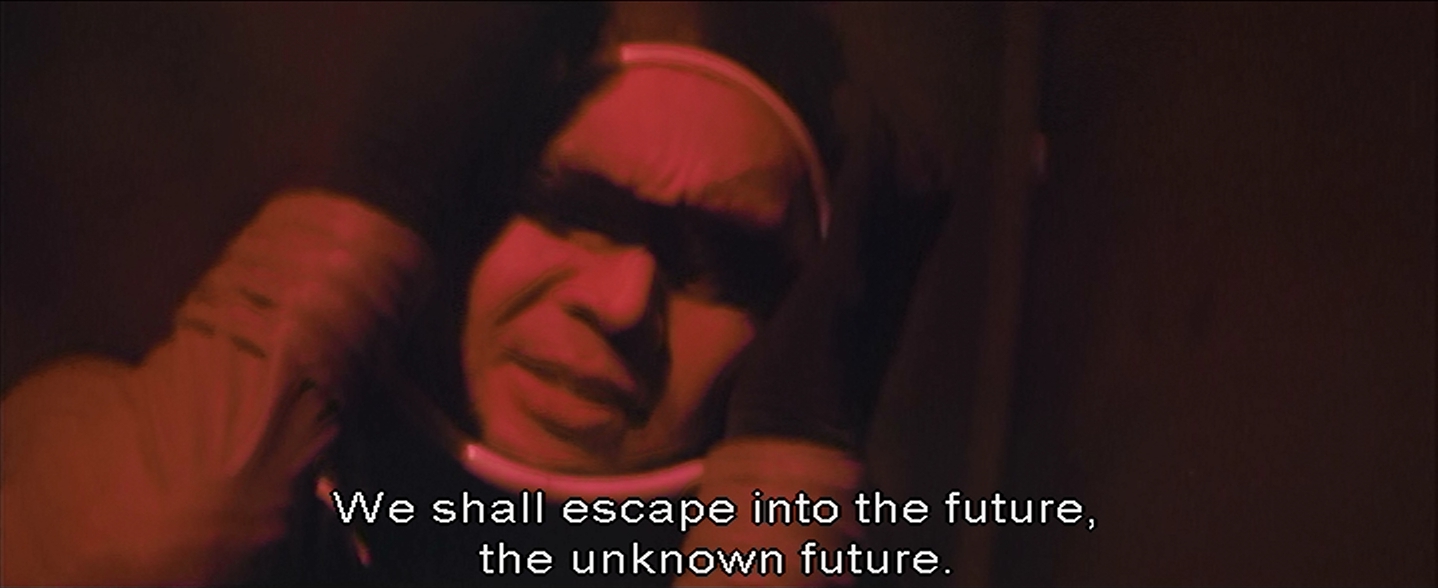
Once free of the Xilian influence, Godzilla follows his natural instincts and attacks Ghidorah. The fight is satisfying. Ghidorah is demonstrably too much for either Godzilla or Rodan to fight alone, but together, they manage to get the job done. In a very post-King Kong vs Godzilla ending, Godzilla and Ghidorah fall into the convenient lake. But as with Kong, Ghidorah, the 'villain' of the piece escapes, and we are left wondering if Godzilla has survived. Rodan sort of floats off somewhere.
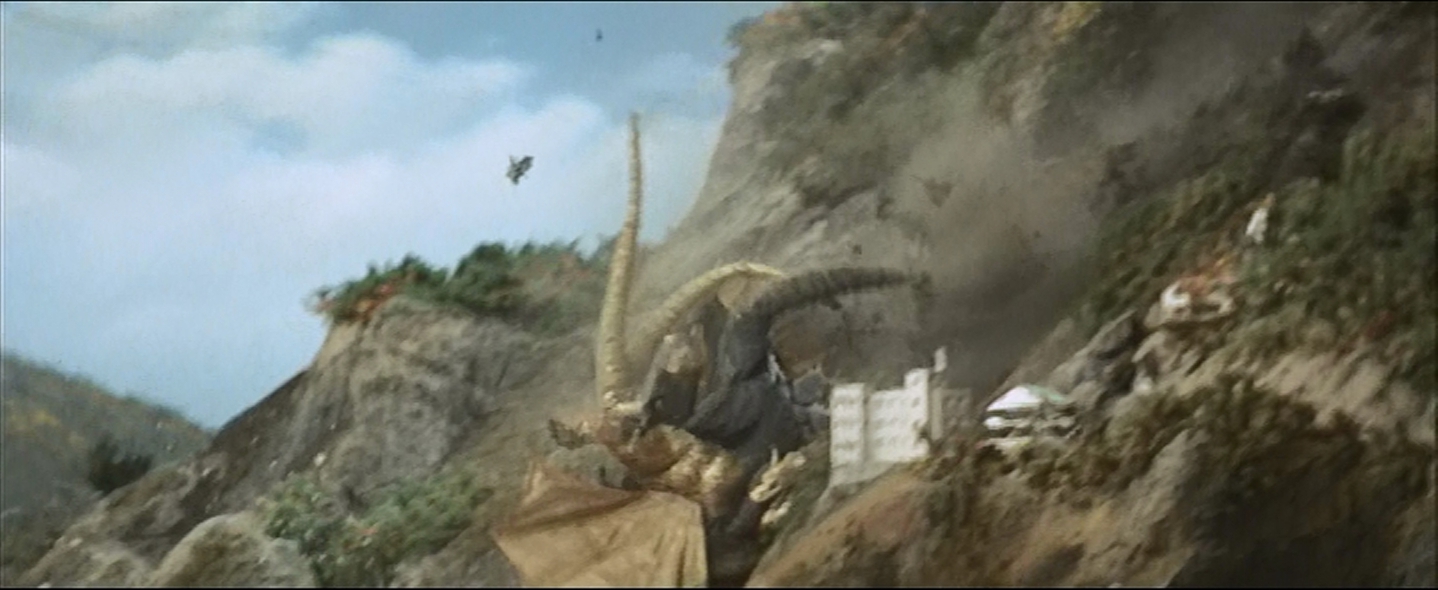
Invasion of Astro-Monster is a fun film. Toho was making a lot of sci-fi spectacles in the middle sixties, but their budgets were running a little thin. But the real cost-cutting wasn't here yet, and the Ishro Honda/Shinichi Sekizawa/Akira Ifukube/Eiji Tsubaraya/ Tomoyuki Tanaka machuine was still running pretty well.
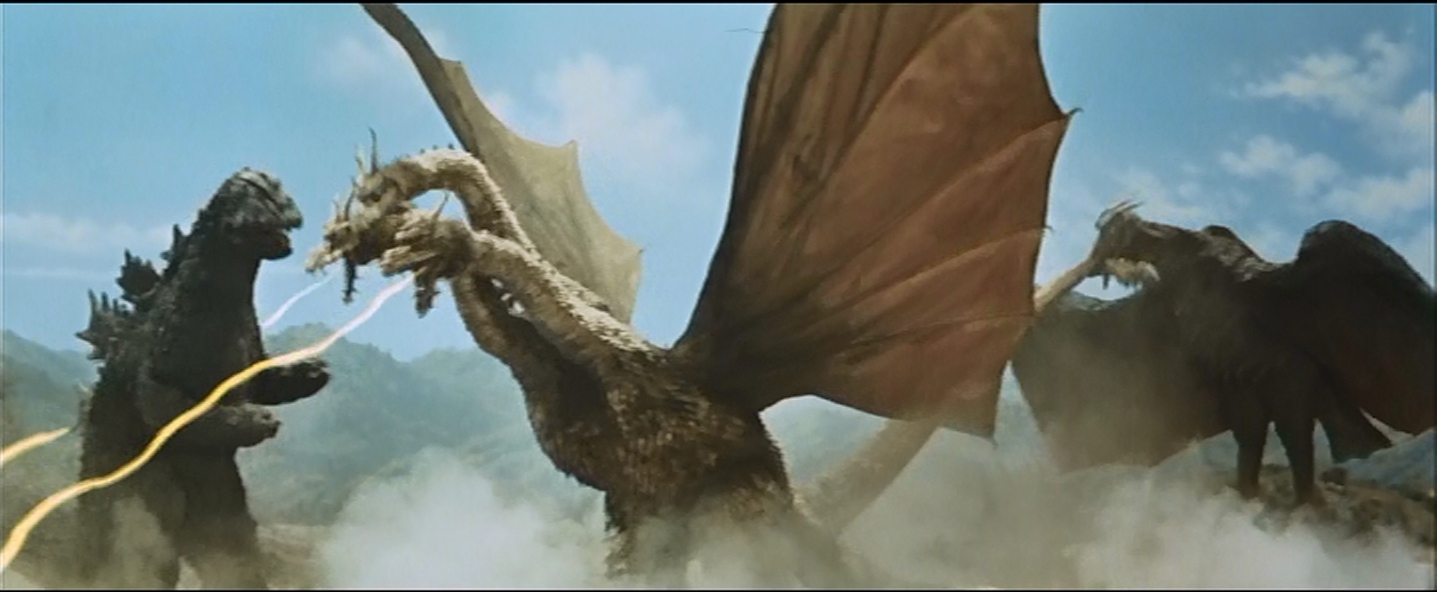
Next week, I take a break from Godzilla, and we look at the first appearance of Baragon, and a return appearance by Nick Adams.
No comments:
Post a Comment